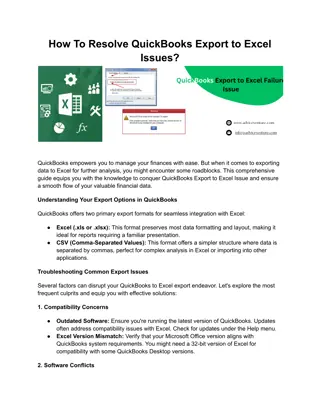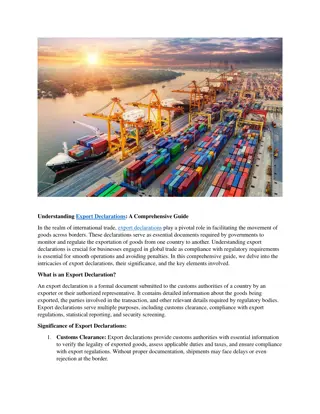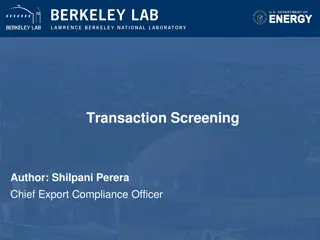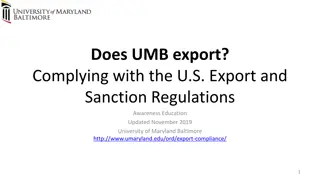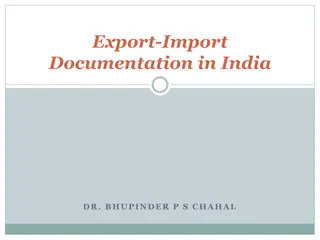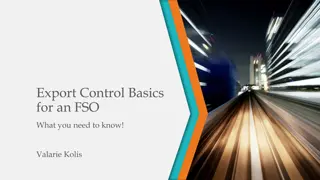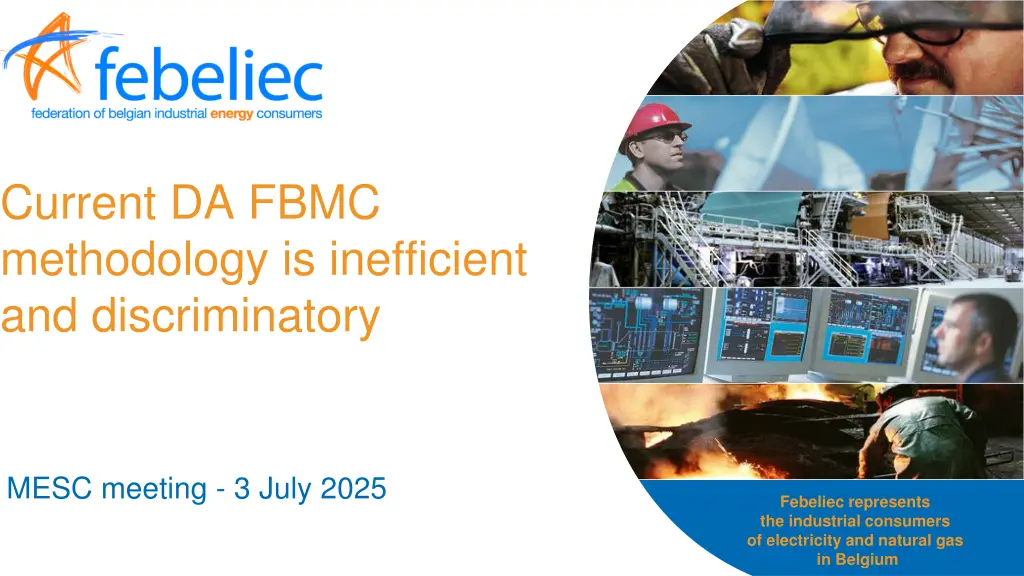
French Export Capacity and Market Impact Analysis
Discover the inefficiencies and discriminatory practices in the current DA FBMC methodology related to French export capacity. Learn about the impact on price spreads, energy-intensive industries, and adequacy in the European market. Gain insights into the discriminatory aspects of forecasted exchanges between Core and non-Core/non-EU regions and the resulting inefficiencies. Explore the details of French export capacity and the sharp increase in Fuaf.
Download Presentation

Please find below an Image/Link to download the presentation.
The content on the website is provided AS IS for your information and personal use only. It may not be sold, licensed, or shared on other websites without obtaining consent from the author. If you encounter any issues during the download, it is possible that the publisher has removed the file from their server.
You are allowed to download the files provided on this website for personal or commercial use, subject to the condition that they are used lawfully. All files are the property of their respective owners.
The content on the website is provided AS IS for your information and personal use only. It may not be sold, licensed, or shared on other websites without obtaining consent from the author.
E N D
Presentation Transcript
Current DA FBMC methodology is inefficient and discriminatory MESC meeting - 3 July 2025 Febeliec represents the industrial consumers of electricity and natural gas in Belgium
French DA export capacity to Core region In 2025, French DA export capacity to Core region has halved compared to 2023 2
French Export capacity market impact Price spreads between France and other Core-countries have increased sharply At the same time, energy-intensive industry is suffering in Europe What is the impact on adequacy? 3
Our understanding of what is going wrong Our understanding of the methodology and the resulting inefficiency Within Core, with FBMC: no reservation of network capacity algorithm allocates network capacity in a way that the highest welfare is created trades are in competition with each other and the trade creating the highest welfare gets access to the scarce network capacity no discrimination + efficient Exchanges between Core and non-Core/non-EU: forecast needed by TSOs of potential exchange this forecasted exchange has priority access to network capacity within Core (via Fuaf) exchanges within Core cannot compete with exchanges between Core and non- Core/non-EU, also if a country in Core faces adequacy issues (tbc): discrimination + inefficient Forecasting tool used by TSOs no welfare optimization self-referential: previous trading day as input not been published 4
French Export capacity details Current DA FBMC methodology is inherently discriminatory: forecasted exchanges between Core and non-Core / non-EU get priority over intra-Core exchanges, without welfare maximization: this is discriminatory and inefficient If the exchanges between Core and non- Core / non-EU are small, this discrimination leads to minor inefficiencies e.g. resulting Fuaf on FR CNECs was relatively small: 6,5% on average Source: blog Frank Boerman https://boerman.dev/posts/flowbased/highfuaf2025/ 5
French Export capacity Fuaf increased sharply However, the exchanges between Core and non-Core/non-EU have increased sharply, leading to much bigger inefficiencies resulting Fuaf on FR CNECs increased from 6,5% to 31%, a 25%point increase! Cross-border exchanges within Core have decreased sharply Since exchanges within Core optimizes welfare, this leads to much less efficiency Source: blog Frank Boerman https://boerman.dev/posts/flowbased/highfuaf2025/ 6
French Export capacity recurring problem Problem is not new ACER s MMR: the upfront consideration of flows induced by exchanges with and between non-EU countries in capacity calculation may mean that such exchanges get priority access to the EU grid, as a portion of capacity in EU network elements are reserved for them TSOs consider the best estimate of the state of the power grid when calculating intra-EU cross-zonal capacities but may implicitly give preferential access to the EU network to non-EU exchanges Same goes for Core vs non-Core 7
Conclusion + solution Increased exchanges with non-Core price zones that get priority (without welfare optimization) discriminatory and inefficient Big concerns about impact on price and competitiveness of energy- intensive industry in Core region (BE / NL / GE / ) Big concerns about the impact on adequacy in Core region: even if a country in the Core region would pay the max day-ahead price, this would not increase import from France to that country in the Core region (tbc) 8
Possible solutions Possible solutions to increase efficient grid use : avoid priority of non- EU/non-Core exchanges over EU/Core internal exchanges a. Remove the CNECs near the Swiss border b. Tweak (and publish the methodology of) the forecasting tool and put less weight on non-EU/non-Core exchanges c. In parallel: implement AHC on FR-CH and FR-ITN d. In parallel: speed up the process of ITN joining DA FBMC 9



